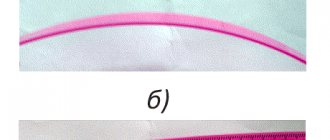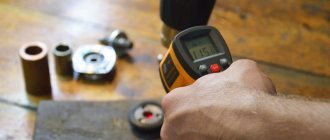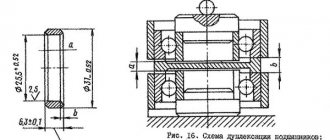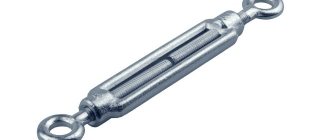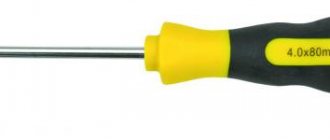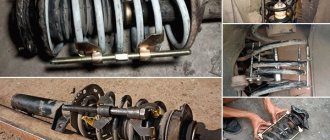The main element of the puller is the central bolt, the rotation of which creates a counter force. In powerful models, this bolt is supplemented with a hydraulic cylinder.
Grips are the main element in the design of any puller for fixing a part. There are two types of grips:
- Grips that clamp the part being removed due to the force created by a bolt or hydraulic cylinder and which, in fact, serves for dismantling;
- The grips engage with the object being dismantled using a special tool, independent of the action of the bolt. For example, in a simple version this is a threaded connection.
When there is no point in the part being dismantled to which a counter force can be applied, the following scheme is used. To implement it, models are used in which the force for dismantling is generated by a hammer sliding along the axis of the tool (sometimes called a hammer). Hitting a special boss on the axis, it transmits force to the gripper(s). This type of bearing puller is called impact or inertial bearing puller. There is no power bolt in impact models, and they can only be used with grips of the second group. The only exception would be the simplest version of the impact puller.
Tool manufacturers use high-strength alloy steels, and the most critical parts are formed by forging. Power bolts are made from stronger steels than conventional threaded fasteners. Highly loaded parts such as power bolts, grippers or gripper tips are usually supplied as spare parts.
Most designs can be considered standard: dozens of manufacturers offer almost identical models. However, you should choose the tool with the utmost care. First of all, you should pay attention to the strength and rigidity of the structure as a whole. No less important are details that seem insignificant at first glance, for example, design features of the jaws and their grips, backlash in the joints of units, etc.
Universal
This is the most common type of this instrument. Pullers are used to remove bearings, gears, pulleys, etc. The basis of the design is a power bolt, the rotation of which creates a dismantling force applied to a support point located on the unit being dismantled. Through the central body of the puller, this force is transmitted to the grippers that are in engagement with the part being dismantled. If the protrusions of the grippers are directed inward, then the puller is external. If you turn the grips with the protrusions outward, the tool becomes internal. Some models are combined, i.e. external/internal. Other models are not adapted to such a transformation and can be used only as external or only as internal; the basic principles of their operation do not change from this.
The suitability of a tool for performing any operation is determined by the following parameters:
- The maximum permissible load is determined both by the strength of the power bolt and the central body of the tool, and by the number of grips and the strength of an individual grip. The maximum permissible load may be specified by the manufacturer, but it is almost impossible to numerically estimate the force required to dismantle the part. For this reason, when choosing, they usually take into account only its compliance with the dimensions of the part being dismantled;
- The working stroke is determined by the reach of the power bolt, the length of the grips, as well as the location of the points of application of the dismantling force;
- The geometric dimensions of the grips, primarily the height of the stop and, to a lesser extent, the width of the stop;
- Maximum and minimum gripper opening.
The main difficulty in application is that the grips and stop points of the power bolt tend to move during operation. Many structures have various types of devices designed to counteract such displacement. However, these devices cannot be universal. While effective in one situation, they may be completely useless in another.
Purpose and features of the device
If a hum or noise appears in the area of the car wheels that confuses you, this indicates that the wheel bearing has broken. It is not recommended to delay repair or replacement of this unit. If you are not a specialist in this field, then contact the nearest service station as soon as possible, where the car will be inspected and given a consultation.
However, it is not always possible to use the services of professionals; in some cases you have to act on your own. One of the most difficult repair operations is the dismantling of bearings. This requires special tools.
The most primitive wheel bearing puller is an item consisting of the following elements:
- metal rod;
- gripper arms (2 pieces) with ends curved inward.
The device has a movable connection and the gripping distance can be easily changed. The paws can be used to remove and fix the following:
- rings;
- ball bearings;
- gears.
If the tool has three gripping paws, then it has more possibilities, since the paws can be deployed and used to remove internal elements. It is called an internal bearing puller.
The most versatile device is the combined pressing tool, which has the properties of both a two-legged and a three-legged tool. Its design includes special clamps through which damaged particles can be easily removed.
Mounting and dismantling bearings requires applying manual pulling force to seat or remove one or another element. The success of your work, as well as your own safety, depends on how correctly you choose the tool.
With sliding grips
They are one of the simplest types. Available in many varieties, differing slightly in detail. Most of these items have two grips. The grips move freely along the beam, in the middle of which there is a threaded hole. Bolts at the top of the grips on some models may serve to secure the grips to the beam, although locking is usually achieved through friction. Obviously, if you rearrange the jaws, the puller will become internal. Often such tools are produced in series of two to five models of various sizes (maximum jaw opening from approximately 100 to 800 mm).
Such models can be equipped with a set of grips of different lengths. Sometimes the grips are equipped with replaceable tips. Stresses on the gripper tips can be very high, and for this reason the ability to replace damaged grippers or their tips extends tool life.
The options for pullers with sliding jaws are very diverse. They can be equipped with a device that, firstly, serves to fix the jaws, and secondly, counteracts the lateral displacement of the power bolt. The kit may include stops for the power bolt, which prevent its damage and displacement from the stop point.
Internal bearing pullers
They allow you to grab the bearing by the hole in the inner ring and pull it out of the housing. When choosing, it is necessary to determine the diameter of the bearing bore and select the type of spacers - three-jaw, segment or for needle bearings. We offer pullers for hole diameters from 5 to 200 mm.
Next, if there is a supporting surface on the body for a stop, you need to choose a puller with a counter support and a spindle.
Otherwise, you need a puller with a reverse hammer.
With swivel grips
They are more varied in design. The grips in them are locked with bolts.
A puller with two rotating double-sided jaws has stops that have different widths at both ends of the jaws. It comes with three rotating one-sided grips; the reach of the grips can be changed by rearranging them. There is also a model that can be used with either two or three rotating single-sided grips. There are 4 points on the body of the puller for installing grips.
Some can be used with an impact (inertial) puller. They can also be used as internal ones, but then the clamp can no longer be used to secure the grips. Crossed grips allow you to change the grip over a wide range. A small (working width up to 50 - 70 mm) tool of simple design, originally intended for removing the ends of battery cables, but is widely used for dismantling various small parts.
Specifications
These tools differ in different parameters. So, according to the principle of activation, they are as follows:
- mechanical type internal bearing puller - it works by manual force and is designed to work with not particularly tight joints;
- Hydraulic bearing puller - used for hub devices and has a hydraulic drive, which helps to unscrew stuck particles and ease the operator’s efforts.
They have different devices and different operating ranges . They have two meanings:
- maximum working space width;
- maximum length.
The higher these indicators are for the front hub tool, the better it is. The working range can be different, for example, 185/225 mm or 290/380 mm and more.
Mechanical Bearing Pullers
Mechanical pullers are of the following types:
- internal;
- two-grip;
- three-grip.
Double-jaw tools are reliable and simple designs made from high-strength alloys through forging. It also ensures decent control over the entire work process.
They are used as wheel bearing pullers. Some modifications are designed for 1 diameter. They are more reliable because they have a monolithic design. But universal pullers are the most common and can be adjusted to any diameter. But this option has a slight backlash when performing a tightening force.
Three-grip options are more advanced in design and have three gripping arms. They are made from carbide tool steel by forging. They are used as bearing pullers on the front hub. The reliable gripping system allows them to also be used as generator bearing pullers.
Be sure to consider the build quality of its components when choosing a tool. In particular, there should be no unnatural play, and the hooks can be made at an angle to the base to properly secure the puller to the shaft.
Using internal pullers, ball or needle roller bearings are removed, as well as brass couplings of various shafts, crankshafts in particular. And similar pullers are needed for dismantling bushings and bearings with a tight fit.
There is another type of this tool - a special one, which is used for pressing out bearings of various automotive devices:
- generator;
- motor;
- cylinders and more.
These devices are manufactured to specific diameters and sizes, only this ensures their reliable operation.
Hydraulic pullers
The hydraulic method of installation or dismantling involves the use of special tools for seating or semi-automatic removal of bearing elements. Hydraulic traction is used here.
A hydraulic puller is a nut whose internal cavity presses on a special piston, which transmits forces to the part that is being removed or installed. Using this puller, you can remove wheel hub bearings from cars of different brands. It is also used as a puller for pulleys.
Hydraulic pullers are used for mounting and dismantling bearings of trucks and large vehicles. Their internal parts are quite massive, and human strength is limited.
How to work with a hydraulic device
To prepare the puller for work , you need to do the following:
- We check all its parts for serviceability. If there are cracks, deformations or signs of severe wear, it should not be used;
- accurately estimate the axial force required to remove the part from the shaft. If the force of the hydraulic cylinder is small, it cannot be used; select the option that is most suitable for this;
- operating temperature should be up to 45 degrees.
Then we proceed directly to the work itself:
- Place the grippers over the part to be removed. Screw the hydraulic cylinder of the puller into the nut with legs so that the end of the rod rests against the shaft with the part. The conical nozzle on the rod should fit into the centering hole of the shaft;
- screw the pressure release screw all the way;
- Using the handle, we pump oil from the tank into the hydraulic cylinder, and the rod should rest against the end of the shaft, and the part will move. When removing a part, you need to monitor the position of the working platforms of the paws relative to it so that they do not fall off;
- Depending on the model of the tool, the stroke of the rod should be 50−70 mm.
Many people are interested in how to properly maintain the tool and whether there are any guarantees for it from sellers and suppliers.
Thus, hydraulic oil will lose its properties over time and become contaminated. During operation, you may need to add oil or replace it entirely. Oil is added directly into the rubber container of the tank, located under the steel casing. To change the oil in the puller, the steel casing must be removed, then the oil is drained, but the rod cannot be pulled out. The working fluid is special hydraulic oil.
It is strictly forbidden to allow water to get on the tool, and its parts must be lubricated in a timely manner.
As for warranties, suppliers provide it for a period of 12 months from the date of purchase, but only if the consumer follows the rules for using the device as set out in the manual.
Suppliers accept all claims only if there is an instruction manual, as well as with a note on the date of purchase and the stamp of the company that carried out the sale.
Such warranty obligations do not apply to tools with mechanical damage caused by improper use, as well as attempts to repair them yourself, as well as if there is no oil in the tank or if the oil in the tank does not correspond to that recommended by the manufacturer.
Product quality must be controlled. Each instrument must undergo a series of special technical tests. Especially when it comes to hydraulic products. Such pullers can develop a force of 15 tons or more. Their production is controlled using special devices that carry out spectral and ultrasonic analyses.
With conical jaw lock
They have two or three grippers and are intended for use in cases where it is necessary to eliminate the asymmetrical load application during dismantling. They provide automatic centering of the jaws using a conical nut that is hand-tightened when the puller is installed. Sometimes this nut is spring loaded.
For external and internal use of such a puller, grippers of different shapes are usually used. Less commonly used is a specially shaped nut that allows the jaws to be reversed so that the puller can be used as an external or internal puller. They are often included in kits along with impact pullers.
Wheel hub puller
The second example is how pullers make it easier to repair the chassis of cars. Russia's vehicle fleet, after the decline in sales during the crisis years of 2008–2009, is quite old, despite the revival of sales of commercial vehicles in 2010–2011. When carrying out repair work on the chassis of old and neglected vehicles, repairmen are often faced with the problem of dismantling wheel hubs. Disassembling this unit requires skill, accuracy and is complicated by the significant weight of the parts. This problem is especially acute when it comes to the hubs of truck drive axles. To make the work easier, special devices are used. For example, in the product line of the German company Kukko there is a fairly simple but functional KS-10G puller with a hydraulic drive. Its kit includes: a hydraulic cylinder with a manual drive, developing a force of 10 tons, forged pulling cones with a diameter of 300 and 350 mm and six power, again forged, brackets for attaching the device to the wheel studs.
The puller is assembled and installed on the hub to be dismantled in a matter of minutes. In this case, the hydraulic cylinder is screwed into a pulling cone that is suitable in size to the hub. As practice shows, two cone options (300 and 350 mm) are enough to ensure installation of a puller on the hub of almost any commercial vehicle. To activate the device, it is enough to evenly rotate the screw acting on the piston of the hydraulic cylinder. A smooth increase in force and a uniform, gradual shift of the hub from the axle allow the master to closely control the dismantling process. Well, of course, no hub can withstand the pressure of twenty tons.
With separator
They represent one of the most reliable designs. The basis is a separator, which is installed under the part being removed. Both halves are brought together using bolts to securely grip the part. Then a pulling part is connected to it, the side bolts of which are adjusted in accordance with the position of the separator halves, and the power bolt is inserted onto the fulcrum (usually the axis on which the part being removed is located). After installing the tool and tightening the power bolt, the part is dismantled.
The separator can also be used in combination with a sliding jaw puller. This requires some care to ensure the grips do not damage the threads of the cage bolts, but reduces the overall cost of the kit.
SV33 Screw puller 3t, 3 jaws - 9,000 rub.
Screw puller SV33 is used for removing parts installed with slight interference and requiring little effort. The puller has high reliability and simplicity of design.
| Effort, tf | 3 |
| External, mm | 15-170 |
| Gripping depth, mm | 190 |
| Dimensions, mm | 180*270*655 |
| Weight, kg | 16 |
| Number of paws | 6 |
Top 3. AvtoDelo 40504
Rating (2021): 4.72
The most popular Affordable cost and ease of use make this puller the most popular tool.
- Characteristics
Average price: 350 rubles
- Country: China
- Type: crescent
- Working width: 65-110 mm
- Weight: 240 g
An easy-to-use tool, the working part of which is made in the form of a toothed, curved metal plate with a movable lip. This element is responsible for the reliable grip of the filter housing. For comfortable work there is a comfortable plastic handle. Thanks to the long length, the leverage of force is significantly increased, eliminating the need for rough physical impact. Please note that this model is not designed for difficult operating conditions. If you plan to regularly tear off massive stuck-on oil filters, it is better to look at another model. When performing work, you need to ensure cleanliness - if oil gets in, the handle becomes very slippery.
Advantages and disadvantages
- Low price
- Ease of use
- Big lever
- Adjustable working width
- Slippery handle
- For personal use only
Top 9. Ombra A90020
Rating (2021): 4.57
The most durable puller No welds, screws or rivets ensure a strong design and long service life.
- Characteristics
Average price: 648 rubles
- Country: Taiwan
- Type: end
- Working width: 68 mm
- Weight: 168 g
A high-quality puller for oil filters, which compares favorably with similar products due to its structural integrity. The tool is made in the form of a cup with a diameter of 68 mm - this size is most often found in engines of Korean and Japanese cars - Toyota, Honda, Kia and Hyundai. To use the puller, you will need a 3/8″ square wrench. Powder coating reliably protects the metal from corrosion and withstands various external influences quite well. The disadvantage of the tool can be considered only a limited scope of application. For those who purchase a puller for personal use, the problem loses its relevance.
Advantages and disadvantages
- Structural Integrity
- Protective covering
- Ease of use
- Limited scope
Top 7. JTC AUTO TOOLS 4667
Rating (2021): 4.62
The best choice for Toyota cars The design of the puller is specially designed taking into account the location of oil filters in Toyota and Lexus cars.
- Characteristics
Average price: 900 rubles
- Country: Taiwan
- Type: end
- Working width: 72.5 mm
- Weight: 186 g
An extremely simple and reliable oil filter puller designed for servicing Toyota and Lexus cars. There is simply nothing to break here - the tool itself is a bowl with a multifaceted working surface that completely follows the contours of the outer surface of the filter housings. The design allows you to work in hard-to-reach places when the oil filter is located in close proximity to attachments. The model is designed for use with a ½″ square wrench or a 21 mm wrench. The only disadvantage of the model is its limited scope of application, since filters of these standard sizes are installed exclusively on Japanese cars.
Advantages and disadvantages
- Design reliability
- Compatible with Japanese cars
- Ability to work in hard-to-reach places
- Limited scope
See also:
- 5 best oil filters for Lada Vesta
Blueprints
The car's chassis suffers from uneven road surfaces, especially the parts responsible for damping vibrations. First of all, the front and rear hub mechanisms are destroyed. To restore them, you need a hand-made wheel bearing puller.
Creating a mechanism begins with calculations, do-it-yourself drawings of wheel bearing pullers, selection of materials and tools.
You can think through the drawing and create it yourself, or pick up a ready-made one on the Internet.
Design and device
Bearings are found in many components in a car: clutch release, hub. The part always “fits” very tightly, with tension, and it is difficult to remove it during routine or operational repairs. Locksmiths have to put in a lot of effort, which is made easier by auxiliary, often homemade, equipment.
A pressing tool is not a very simple tool, but after studying the technology and drawings of bearing pullers, it is possible to make a mechanism with your own hands in a garage.
Pressing out/pressing machine for silent blocks and wheel bearings
Pullers are a group of hand tools that help remove a gear, pulley, bushing, or bearing without destructive consequences.
The principle of operation of the mechanism is to transmit a very high torque (sometimes up to 40 tons) to the part being dismantled. With all the design diversity, press-out machines consist of two main elements:
- The threaded center rod is a strong bolt of specific dimensions.
- Hook-shaped grips for engagement with the extracted element.
The mechanism operates using a bolt (central body): when it is tightened or unscrewed, the bearing comes out of its seat or is pressed in.
Top 4. JONNESWAY AI050043
Rating (2021): 4.70
Long warranty period The reliability of the tool allows the manufacturer to guarantee uninterrupted operation of the puller for one year - this is the best indicator among similar devices.
- Characteristics
Average price: 1990 rubles
- Country: Taiwan
- Type: tick-borne
- Working width: 53-118 mm
- Weight: 460 g
Practical tool with adjustable working width, made of chrome vanadium steel, which ensures resistance to mechanical stress. The design of the model allows you to fix the filter using four landing planes with a toothed profile. The puller is suitable for working in difficult conditions - the surface of the tool is resistant to oil products, and for dismantling stuck filters, there is a function for adjusting the applied force, implemented using a screw mechanism. The only disadvantage of the model is its high price. On the one hand, the cost of the instrument is quite justified, but for a home instrument it is still a bit expensive.
Advantages and disadvantages
- Chrome vanadium steel body
- Robust design
- Adjustment of fixation force
- High price
See also:
- 5 best oil filters for Kia Rio
Top 2. JTC AUTO TOOLS 1942
Rating (2021): 4.76
The most compact tool The small size and shortened gripping devices make the purchase of this puller the best solution for working in hard-to-reach places.
- Characteristics
Average price: 1010 rubles
- Country: Taiwan
- Type: crab
- Working width: 63-102 mm
- Weight: 430 g
A universal tool with a large working range. High quality workmanship allows the model to be used for independent and professional car servicing. The gripping devices are three paws with a flat working surface, which provide strong and neat fixation of the filter. A special coating protects the metal surface from corrosion, which saves the owner from problems with finding storage space. To work with the tool, you will need a 1/2″ square wrench or a 21 mm open-end wrench. It is worth noting that the mounting hole for the square does not correspond to the declared dimensions - there is a slight play. It does not affect performance, but can irritate overly demanding professionals.
Advantages and disadvantages
- Compact dimensions
- Workmanship
- Protective covering
- Inappropriate square size
Materials for production
A bearing is an element that you cannot handle with your bare hands. Therefore, only durable high-alloy steel is used as the manufacturing material. The central body, the power bolt, has even greater strength.
For work you will need the following materials:
- two square metal blanks;
- a pair of steel plates;
- two bolts with nuts;
- release bolt with a working nut of suitable diameter.
Tools: welding machine, grinder, electric drill with a set of drills.
